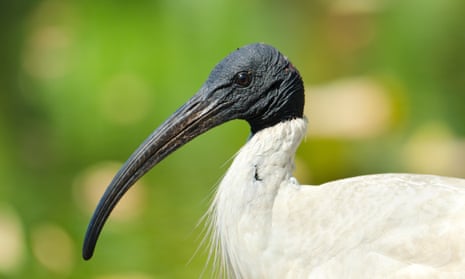What happened? Am I missing something, do people actually “like” ibis? I know they didn’t win, but hell, they came second – that’s a win for the bin chicken, surely?!
I like ibis, and I’ve occasionally met people who admit to liking ibis, but overwhelmingly I hear and read comments from people expressing that they do not like ibis. Despite this, the Australian white ibis has become an icon – to individuals, music, documentaries and government. It’s revered by our modern society like its cousin the Sacred Ibis was in ancient Egypt as the god Thoth. Of course, in this instance my interpretation of the word “revered” includes being the butt of many, many jokes and even more memes.
Let’s go back in time, it’s the 1970s, you’re an avid bird watcher, and you’ve seen a white ibis near your town or city – you race home, pick-up the phone and call all your friends inviting them to come and see this majestic bird. Yep, the white ibis wasn’t always the “bin chicken”, in fact it is a wetland bird. Equipped with long legs, neck and bill the white ibis is designed to wade through water and vegetation, and probe into the water, soil and through vegetation to eat worms, frogs, fish; anything they can catch. Their colonisation of urban areas, and associated shift to a fast-food diet, is a remarkable example of their adaptability.
Changing behaviour, habitat and diet doesn’t come naturally or quickly for most animals. Over the past few decades the white ibis has adapted its behaviour to tolerate people, to the point where many of us have heard stories of ibis grabbing food out of people’s hands. Similarly, ibis naturally nest on reeds that grow within a flooded wetland, so nesting in palm trees along major roads and in urban areas is extremely different from their tranquil wetlands. And as mentioned above, white ibis eat animals like frogs and insects, in urban areas we see natural foraging for worms (especially if it has rained), lawn grubs and insects in parks, but eating bacon, noodles and fried rice out of take away containers, bins and at landfills are amazing examples of recent adaptation. Their adaptability has seen white ibis become a common urban bird, unexpectedly, and with this has come the memes, jokes and nicknames: bin chicken (popular vote), tip turkey (longstanding name), dump chook (a landfill name), and picnic pirate (currently my favourite).
OK, we’re back to Monday 11 December 2017 and the bin chicken has been pipped at the post by a magpie for the bird of the year – crap! A magpie, really people? They aren’t an icon, they aren’t ironic, they are a pretty bird with a beautiful call. OK, congratulations magpie, someone had to win and we white ibis lovers are glad it is another boring bird with only black and white feathers, rather than one of those showoffs, like the rainbow lorikeet.
Truly, if you asked anyone a month ago if the Australian white ibis would come second in a popular vote as the bird of the year I struggle to imagine even one person seriously predicting this result. I would have said it was unlikely to place in the top 50. This is a stunning result. But like all champions this fantastic result hasn’t been achieved overnight. The bin chicken has a lot of people to thank, for the memes, social media pages dedicated to its “disgusting” brilliance, songs, documentaries and, of course, the media raising awareness of this Australian icon over many years. This is a great moment, we have a unique sense of humour and voting the bin chicken as our runner-up bird of the year is a bloody classic. I think it is worth mentioning that it is also very popular with visitors to Australia, I regularly see tourists taking photos and videos of white ibis. I’ve chatted with lots of tourists over the years about white ibis and they marvel at their [good] looks, their “no fear” attitude to people, their size for a “city bird”, and they delight in their close encounters.
Bin chickens can be a nuisance, sure – that’s how they got their nickname. It is important that I clearly state that the Australian white ibis is a native bird, as the name indicates. Over the years I’ve spoken with many people who dislike white ibis. The first thing I say is that they are native – and this is commonly a surprise. The fact that this nationally popular bird is perceived as a nuisance means that our beloved bin chickens are commonly, and mistakenly, considered as an introduced (non-native) species. The other key points are that white ibis have adapted, as noted above, humans have altered the land and rivers and this is one of the few native species that is exploiting us – a true winner.
